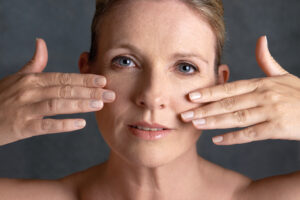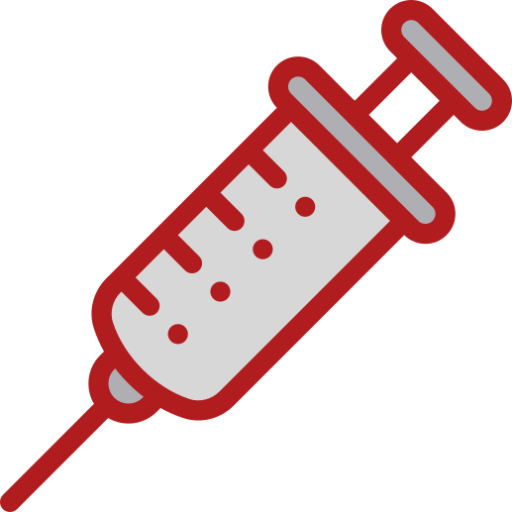Physiological Changes in Perimenopause and Menopause: Approach with Cosmetic Treatments and Evaluation of Their Effectiveness
Perimenopause and menopause are natural stages in a woman’s life, characterized by hormonal changes that affect multiple body systems, including the skin, hair, and oral health. The decline in estrogen negatively impacts skin structure, leading to dryness, loss of elasticity, reduced dermal density, and the appearance of wrinkles. Additionally, hair changes such as thinning and hair loss are common, along with an increased risk of dental and periodontal issues. This article discusses the main physiological changes in these areas, the available cosmetic solutions, and methodologies to assess the effectiveness of these treatments.
Physiological changes in the Skin During Perimenopause and Menopause
Skin aging at this stage is primarily related to the decrease in estrogen and progesterone levels. The main changes include:
Reduction in collagen and elastin production
- Estrogen decline causes a 30% loss of collagen in the first five years after menopause, followed by a progressive 2% annual reduction.
- Elastin degradation contributes to decreased firmness and the formation of wrinkles.
Decreased hydration and impaired barrier function
- Endogenous hyaluronic acid production decreases, reducing the skin’s ability to retain moisture.
- Lower sebum production leads to skin dryness and increased sensitivity.
Altered skin microcirculation
- Reduced blood flow decreases oxygen and nutrient supply to the skin, leading to dullness and delayed wound healing.
Increased hyperpigmentation
- Reduced hormonal regulation of melanocytes can result in irregular pigmentation, particularly in sun-exposed areas.
Skin thinning and fragility
- The epidermis becomes thinner and more fragile, increasing susceptibility to external damage.

.
Changes in Hair Health
Hair also undergoes significant changes during perimenopause and menopause due to declining estrogen levels and the relative dominance of androgens:
Thinning and loss of hair density
- The anagen (growth) phase shortens, while the telogen (shedding) phase lengthens, leading to a reduction in hair density.
- Increased follicular miniaturization is observed, especially in the frontal region and crown.
Dryness and hair fragility
- Sebum production on the scalp decreases, resulting in drier, more brittle hair.
- Keratinization is altered, increasing the tendency for frizz and breakage.
Loss of pigmentation
- Melanin production in hair follicles declines, leading to the appearance of gray hair.

Changes in Oral Health
Hormonal effects also impact the oral mucosa, alveolar bone, and gums, increasing susceptibility to dental issues:
Reduced saliva production
- Xerostomia (dry mouth) is common, increasing the risk of cavities and periodontal disease.
- Reduced saliva flow also affects oral pH, promoting the growth of pathogenic bacteria.
Higher risk of periodontal disease
- Estrogen loss is associated with greater bone resorption in the jaw, leading to increased tooth mobility and a higher risk of periodontitis.
- Gum recession exposes more of the tooth root, increasing sensitivity.
Oral mucosa alterations
- Recurrent mouth ulcers, increased susceptibility to fungal infections such as candidiasis, and a burning mouth sensation may occur.

All these changes can significantly impact quality of life, along with other symptoms commonly associated with this stage, such as hot flashes, night sweats, fatigue, and mood swings. The combination of these physiological changes may also influence self-esteem and body image perception.
Evaluation of Treatment Effectiveness
The effectiveness of cosmetic and related treatments can be assessed using different methodologies depending on the area of interest and type of approach:
Skin evaluations:
- Skin density assessment using ultrasound.
- Hydration balance measured by corneometry and transepidermal water loss analysis.
- Lipid replenishment evaluated through fat content analysis.
- Brightness improvement and depigmentation effectiveness assessed via colorimetric methods.
Hair evaluations:
- Hair density and thickness measured through image analysis.
- Study of different hair growth cycle phases.
Oral cavity evaluations:
- Improvement in xerostomia, plaque indices, or bleeding indices.
Clinical evaluations by specialists
- (e.g., dermatologists, gynecologists, dentists, or trichologists), focusing also on safety aspects.
Quality of life assessment
- using validated scales such as the Cervantes Scale, which provides a comprehensive analysis through a structured questionnaire.
Conclusion
The cosmetics and related industries play a fundamental role in the well-being of women during perimenopause and menopause by offering innovative, scientifically backed solutions to mitigate the effects of hormonal changes on the skin, hair, and oral health. Through the development of specialized treatments and the use of advanced technologies to evaluate their effectiveness, these industries not only contribute to improving appearance but also enhance self-esteem and overall quality of life, empowering women to navigate this stage with confidence and well-being.

Company: Zurko Research S.L.
E-mail: info@zurkoresearch.com
Tel: +34 915 211 588
Website: www.zurkoresearch.com
LinkedIn: www.linkedin.com/company/zurkoresearch
Contact us for more info!







 |
| 



